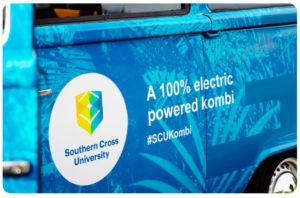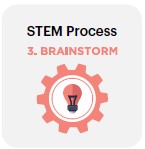
Inquiry question 2:
How does a vehicle’s chosen energy source contribute to the effectiveness, efficiency and overall sustainability of powering the vehicle?
6.1 Electronics
 Students learn about:
Students learn about:
- circuitry
- motors & generators
- fault detection
- prototypes
- making models
- practical application
Students learn to:
- Design and construct basic electronic circuitry Develop basic motors and generators
- Use fault diagnosis techniques to isolate problems
- Use multimeters to test circuits and components
- Use continuity testers/multimeters in the production and testing of practical projects
- Develop prototypes using a variety of materials to simulate motion produce models in order to solve problems related to motion
Lesson 4:
 Facilitation technique Stay-and-stray: Are electric vehicles better than petrol ones for the environment – why? Argue and justify your point of view!
Facilitation technique Stay-and-stray: Are electric vehicles better than petrol ones for the environment – why? Argue and justify your point of view!
Video 2.4.1 & 2.4.2: Comparison of electric and diesel vehicles.
Whole class discussion post-video questions: What are they measuring in this video to make their assessment? What other factors aside from the environment are important to consider in deciding whether to use petrol/diesel or electric vehicles?
Video 2.4.3 & 2.4.4: Students are to identify 3 differences between the operation of a diesel engine and an electric engine.
Whole class discussion: How do you conduct an evaluation? How does an evaluation include the ideas of the pros and cons/trade-offs? Teacher records the process for evaluation on the whiteboard.
Investigation: Students plan an investigation which explores the difference between a number of vehicles powered through different sources. The investigation planning includes formulating a set of criteria to evaluate the effectiveness and efficiency of different types of vehicles that use renewable and electric energy (see the NSW Syllabus Working Scientifically process and the Working Technologically link in the resources section).
Resources
Stay-and-stray: Students are arranged in groups of 3 in a circle around the room (if numbers don’t permit, students form pairs). Each student chooses either A, B or C (pairs just choose A or B). In their group students discuss the question. Then, student A moves anti-clockwise to the
next group, student B stays or ‘be’ where they are and student C moves clockwise to the next group. Student do this once more and then each group reports back on the key points from their discussion.
Video 2.4.1: Electric Cars & Global Warming Emissions
Electric Kombi Project Video 2.4.2:
Environmental Impacts Of Diesel And Electric Engines
Video 2.4.3: How It Works: Internal Combustion Engine
Electric Kombi Project Video 2.4.4: what is the difference between a diesel and electric engine?
Lessons 5 & 6:
 Investigation: Students conduct the investigation using the vehicles they have access to e.g.:
Investigation: Students conduct the investigation using the vehicles they have access to e.g.:
- Solar Wind
- Solar PV (inc. battery)
- Biomass (as biofuels)
- Hydrogen
- Electric
Videos: The teacher may show videos prior to the investigation for ideas and inspiration or afterwards to demonstrate alternative ways of approaching the task.
Report: Students are to write up an evaluation report of their findings for submission (assessment 1).
Resources
Investigation (Lesson 5):
Working scientifically Working technologically
(see p. 29 – 31 of download)
Investigation (lesson 6):
Wind powered car
Video https://justenergy.com/blog/wind-energy-pros-and-cons/2
Solar PV
Video 1
Biomass as biofuels
Video 1
Hydrogen cars
Salt water engine car kit
Salt water fuel cell car kit
Electric car
Video 1
Other possible renewable alternatives
The elastic car
Assessment 1: Evaluation report of the investigation and design process.

